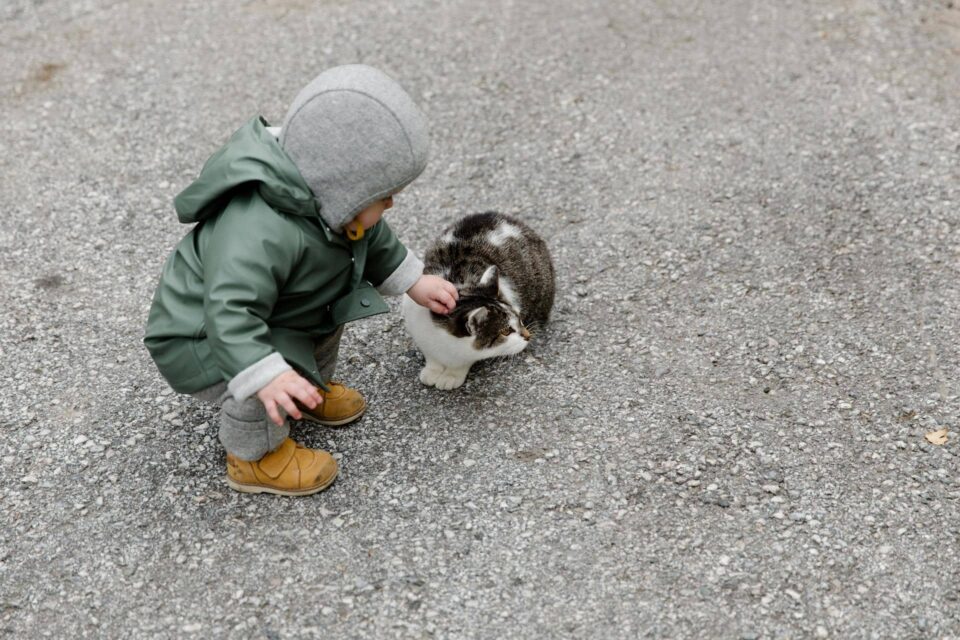
Fostering a Scared Kitten? Here's How to Comfort Them
Fostering a scared kitten can be a heartwarming yet challenging experience. These little furballs, often from tough backgrounds, need extra care and patience to feel safe and loved. By understanding their behavior and providing a comforting environment, you can help them overcome their fears and become happy, healthy cats.
Key Takeaways
- Create a safe and quiet space for your kitten to help them feel secure.
- Understand kittens' signs of fear and anxiety to better address their needs.
- Approach and handle your kitten slowly and calmly to avoid scaring them further.
- Use positive reinforcement, like treats and playtime, to build trust with your kitten.
- Ensure long-term care and socialization to prepare your kitten for a forever home.
Creating a Safe Space for Your Kitten
Creating a safe space is crucial for their comfort and well-being when fostering a scared kitten. This space will help them feel secure and reduce their anxiety as they adjust to their new environment.
Understanding Kitten Behavior
Recognizing Signs of Fear
When fostering a scared kitten, it's crucial to recognize the signs of fear. These can include hiding, hissing, or even trembling. Understanding these behaviors will help you provide the right kind of comfort and care.
Common Triggers for Anxiety
Kittens can be anxious due to various reasons. Some common triggers include loud noises, sudden movements, or unfamiliar people. Knowing these triggers can help you create a more calming environment for your kitten.
The Importance of Patience
Patience is key when dealing with a scared kitten. Building trust takes time, and moving at the kitten's pace is important. Rushing the process can lead to setbacks, so always be gentle and patient.
Remember, a scared kitten needs time to adjust. Your patience and understanding will greatly impact their comfort and trust levels.

Approaching and Handling Your Kitten
Moving Slowly and Calmly
When you first approach a scared kitten, it is important to move slowly and calmly. Quick movements can startle them and make them more fearful. Take your time and let the kitten get used to your presence. Sit quietly in the room and allow them to approach you at their own pace.
Using a Soothing Voice
Talking in a soothing voice can help to calm a frightened kitten. Speak softly and avoid loud noises. This will allow the kitten to associate your voice with safety and comfort. You can even read a book or talk about your day to help them get used to your voice.
Getting Down to Their Level
Getting down to the kitten's level can make you seem less intimidating. Sit or lie on the floor so you are not towering over them. This can make the kitten feel more secure and willing to approach you. Remember, patience is key when dealing with a scared kitten.
Building Trust Through Positive Reinforcement
Using Food as a Tool
Food can be a powerful way to build trust with your scared kitten. Offering treats at consistent times helps them associate you with positive experiences. Start by placing the food near them and gradually move it closer to you. If they are too scared to take food from your hand, use a spoon or a stick to bridge the gap.
Incorporating Playtime
Play is another excellent way to build trust. Toys that mimic prey, like kibble, rolled along the ground or shoe strings, can engage your kitten in a fun and non-threatening way. Initially, they might only play when you're not in the room, but over time, they'll start associating play with your presence.
Gradually Increasing Interaction
Patience is key when increasing interaction with your kitten. Start with short, positive interactions and gradually increase your time together. Use a soothing voice and avoid sudden movements. Over time, your kitten will learn you are a source of comfort and fun.
Building trust with a scared kitten takes time and patience, but the rewards are worth it. Food, play, and gradual interaction can help your kitten feel safe and loved.
Related: How to Bond with Your Cat Through Grooming
Long-Term Care and Socialization
Establishing a Routine
Creating a consistent daily routine is essential for your kitten's comfort and well-being. Kittens thrive on predictability, so feeding, playtime, and rest should happen simultaneously each day. This helps them feel secure and understand what to expect.
Introducing Other Pets
When introducing your kitten to other pets, take it slow. Start by allowing them to sniff each other through a closed door. Gradually increase their interactions under supervision. This careful approach helps prevent stress and fosters positive relationships.
Preparing for Adoption
It is important to introduce your cat to new stimuli, such as various people, sounds, objects, textures, meals, and surroundings, to help them become well-socialized. Their exposure makes them more self-assured and adaptive. Ensure your kitty is accustomed to different household tasks and feels at ease being handled. The kitten and the new owner will benefit from a less stressful and easier transfer to their new home.
Socializing your kitten properly ensures that it grows into a well-adjusted and happy adult cat. This effort pays off when it finds its forever home and adapts quickly to new surroundings.
Special Considerations for Households with Children
When fostering a scared kitten in a household with children, special considerations must be made to ensure both the kitten and the children have a positive experience. Patience and understanding are key to helping a scared kitten feel safe and comfortable.
Related: Pee Frequency: How Often Do Cats Go?
Health and Safety Precautions
Ensuring Veterinary Care
Regular vet visits are crucial for your kitten's health. Schedule an initial check-up as soon as possible to ensure your kitten is free from illnesses and up-to-date on vaccinations. Routine vet visits help catch any health issues early, making treatment easier and more effective.
Kitten-Proofing Your Home
Kittens are curious and can get into tight spaces. Block off any small holes or gaps, like those under the refrigerator or stove. Make sure windows are securely screened to prevent escapes. Store toxic substances, such as cleaning supplies, out of reach. Use cord covers to stop your kitten from chewing on electrical cords. Also, ensure that any household plants are safe for cats.
Recognizing Health Issues Early
Watch for signs of illness, such as changes in appetite, energy levels, or litter box habits. If you notice anything unusual, consult your vet immediately. Early detection can make a big difference in your kitten's recovery.
Creating a safe and healthy environment for your kitten is essential for their well-being. By taking these precautions, you can help your kitten feel at home and thrive.
When fostering a scared kitten, creating a calm and soothing environment is key to helping them feel safe. One way to reduce their anxiety is by using calming scents. Try Gou Gou Pets' Calming Essential Oil Blend Diffuser Set to create a peaceful atmosphere that promotes relaxation and comfort for your kitten.
Conclusion
Fostering a scared kitten can be a gratifying experience but requires patience, understanding, and a gentle approach. Providing a safe space, moving slowly, and using food and toys to build trust can help a fearful kitten feel more secure and loved. Remember, every kitten is unique, and progress may be slow, but you can make a significant difference in their lives with consistent care and attention. Your efforts will help the kitten thrive and prepare them for a happy future in a loving home. So, take it one step at a time, and enjoy the journey of helping a scared kitten become a confident and affectionate companion.
Share

